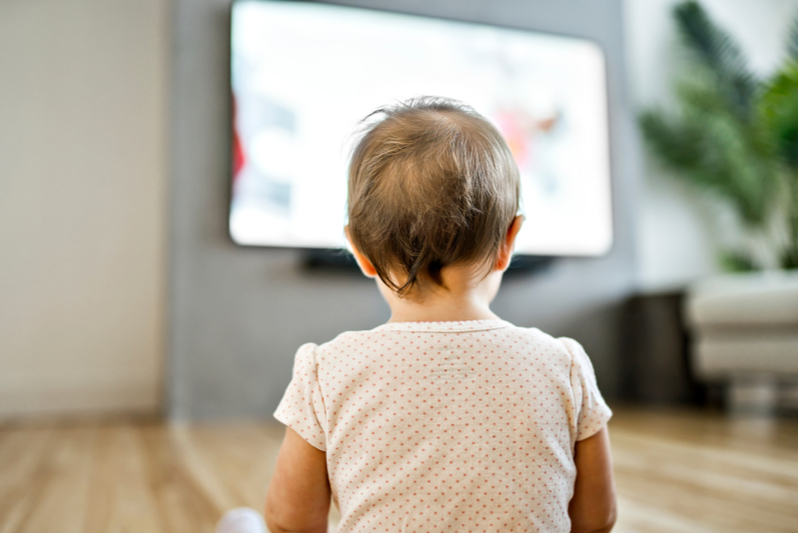Can parents prevent an autism diagnosis just by working with their children, early on? A recent study suggests that when infants show signs of autism spectrum disorder (ASD), parent-led interventions can make a difference. Infants whose parents used a special type of video feedback intervention (iBASIS-VIPP) with them, were only a third as likely to receive a diagnosis of autism at age three. This suggests that intervention in infancy can reduce the odds of an autism diagnosis later on.
Until now, no one bothered to offer autism interventions before diagnosis. Professor Andrew Whitehouse of the University of Western Australia, may have just stood this accepted practice on its head. Whitehouse was able to show that getting ahead of an autism diagnosis in infants showing early signs of autism, can lessen autism symptoms. Improving autism behaviors meant that the children were far less likely to be diagnosed with autism at a later stage.
This is the first time that preemptive intervention in infancy was found to be directly responsible for lowering the threshold for a clinical diagnosis of autism in later years. “The use of iBASIS-VIPP resulted in three times fewer diagnoses of autism at age three,” Professor Whitehouse said. “No trial of a pre-emptive infant intervention, applied prior to diagnosis, has to date shown such an effect to impact diagnostic outcomes–until now.”

Video Feedback Lowers Odds for Autism Diagnosis
According to Whitehouse, until now, many therapies for autism focused on replacing ASD behaviors with more typical behavior, or neurotypical behavior. iBASIS-VIPP is different. In iBASIS-VIPP, video feedback is used to spot the child’s unique differences. This helps parents find the best way to work with and teach their child. “The therapy uses video-feedback to help parents understand and appreciate the unique abilities of their baby, and to use these strengths as a foundation for future development,” said Professor Whitehouse. “By doing so, this therapy was able to support their later social engagement and other autistic-related behaviors such as sensory behaviors and repetitiveness, to the point that they were less likely meet the ‘deficit-focused’ diagnostic criteria for autism.
“We also found increased parental sensitivity to their baby’s unique communication and an increase in parent-reported language development. Other general aspects of development were not affected.
“The children falling below the diagnostic threshold still had developmental difficulties, but by working with each child’s unique differences, rather than trying to counter them, the therapy has effectively supported their development through the early childhood years.”

Early Signs of Autism
The randomized four-year study of babies aged 9-14 months, looked at the possible impact of iBASIS-VIPP therapy. All of the infants had shown behaviors considered early signs of autism. For five months, half of the babies received the video intervention. The other half, representing the control group, received the more standard Early Intervention (EI) therapies. A total of 89 children were assessed before treatment, after treatment, and at two and three years of age.
The study is important because for the first time, we have a therapy that really helps when very young infants first show signs of autism. This at a time when the brain is most plastic: more able to change, adapt, and learn. Autism is usually diagnosed at three and only then do children receive therapy. But by this time, brain plasticity has already peaked.
According to the World Health Organization (WHO), one in every 160 children worldwide, have autism. That’s a lot. It makes it crucial to find therapies to help babies with early signs of autism.

“Understanding Each Child’s Strengths”
“Autism is not typically diagnosed until three years of age, however, interventions commencing during the first two years of life, when the first signs of development difference are observed and the brain is rapidly developing, may lead to even greater impact on developmental outcomes in later childhood,” says Professor Whitehouse. “This is a genuine landmark moment for child health research. Our aim is to understand each child’s strengths and challenges so that we can better support and nurture the unique abilities they bring to this world.
“This is an important step forward in what we hope is an opportunity to develop new clinical models that use very early intervention in babies showing early behavioral signs of autism.”
A follow-up study of the participants is needed, of course. We need to see whether the benefits of video intervention continue for the long-term. Also, children may avoid a clinical autism diagnosis, but still have other issues requiring therapy or treatment. “When an early ASD diagnosis resolves, there are often other learning and emotional/behavioral diagnoses that remain,” says Dr. Lisa Shulman, an associate professor of clinical pediatrics at Albert Einstein College of Medicine and attending physician at the Children’s Hospital at Montefiore.
Downside of the No-Autism Diagnosis
There is another issue that parents should consider. Children who manage to avoid a clinical diagnosis of autism may not be eligible for special services. It’s a dilemma, for sure. If you help the child, and he or she improves, they can lose out on therapies or treatments they may still need. “Diagnosis is important for children because it enables them to become eligible for funding from the medical and educational systems. It also provides people with a common language to share with others.
“It does not, however, provide parents with the tools they need in order to help their children,” says Jacki Edry, author of Moving Forward: Reflections on Autism, Neurodiversity, Brain Surgery, and Faith.
Maybe that is why the Australian study is different from everything we’ve seen before: iBASIS-VIPP gives parents the tools that they need to really help their children. For one thing, video feedback teaches parents how to be sensitive to their baby’s own unique style of communication. Parents have also noted that video intervention increased their child’s language development.
The experts have long known that when parents get involved, children do better. That holds true whether a parent works with kids on their schoolwork, or on their communication skills and behavior. The Whitehouse study bears this out: when parents actively work with their children, they become more attuned to them. Parental involvement means children getting better in their development and their behavior.
